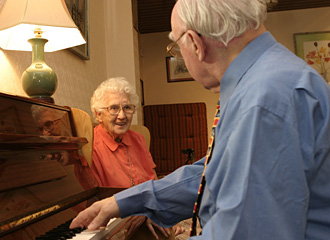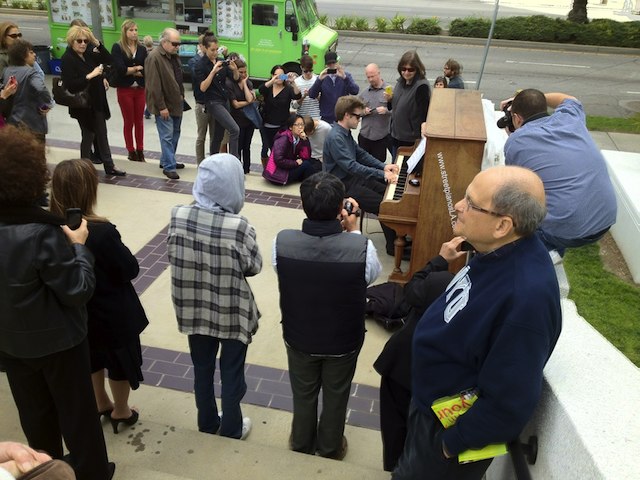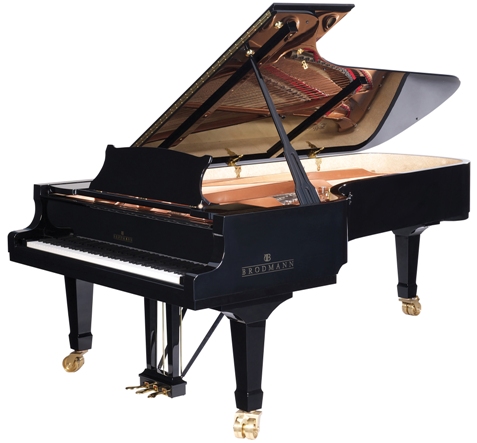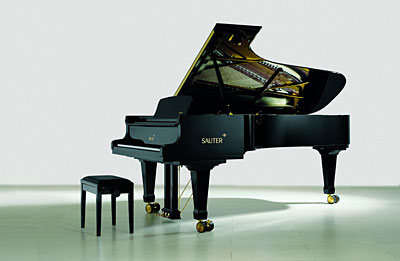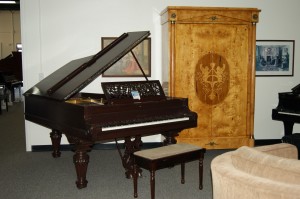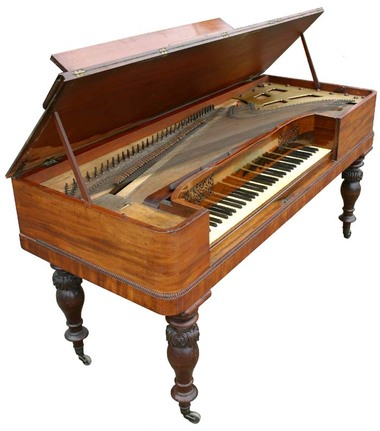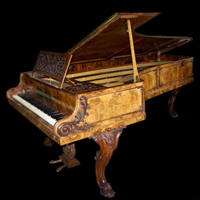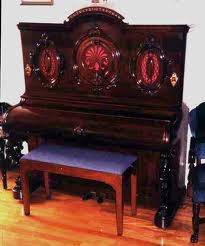Gottfried Silbermann was born on January 14, 1683 and passed away on August 4th at the age of 70 in 1753. He was born in Kleinbobritzsch to a local carpenter by the name of Michael Silbermann. A lot of what he did as a young man is unclear but, one thing we do know is that he obviously moved toStrausburg,Germany at 19 years old in 1702.
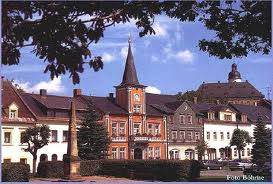
Until the year 1732, Silbermann was most known and had gained great wealth as an organ builder inSaxony. He was noted as being very difficult to work with and quite an unusual style of management as “non-negotiable”. When he wanted something done it was to be done quickly and without question even when dealing with vey influential people and the likes of Johann Sebastian Bach. Consequently he built approximately 50 organs in his lifetime and 29 are still in existence today.
It is widely believed that Silbermann built his first piano in 1732 about 1 year after Christophori had passes away. Somewhere around 1725 an article appeared about a newly invented piano which caught Gottfrieds attention. As a harpsichord builder, Silbermann had quite a lot of experience of proper sizing of the keys themselves.
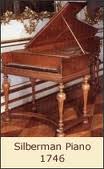
Silbermann Piano 1746
On a sour note of his career, Silbermann had very closely copied Christophori’s inventions but could never correctly copy the back check. The back check helps to give the player a correct response but, he overcompensated by having almost perfect designs in the cases, strings, soundboard, strings and keyboard spacing.
Silbermann’s pianos had gained a lot of attention so much so that sometime in the 1740s, King Fredric the Great of Prussia purchased 15, according to some reports. Two of his pianos can still be seenFrederick’s palaces inPotsdam. Although they are quite simple designs they still are prominent examples of his work
What made Gottfrieds pianos so important were his inventions and additions to the original design. He created a series of dampers that would allow the dampers to lift off the strings when the notes were played and a device that would hold the dampers off the strings for a sustained effect on the sound. Today we know this as a damper pedal which he eventually added but in its original design there was a hand stop kind of device.
Johann Sebastian Bach was asked to play one of Silberman’s creations and it is said that Bach criticized the piano, saying that the tone was weak and the keys were too hard to play. Although this made Gottfried extremely angry he went back to work and corrected the criticism. Bach was so impressed that he later participated in the sale of one of his instruments.
Silbermann’s loved teaching others the craft of piano building. Among his students was a young man by the name of Johann Andreas Stein who was a master piano builder in his own rite. Stein perfected the “Viennese action” which was praised by a very well known group known as Haydn, Mozart and Beethoven.
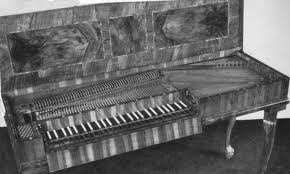
Silbermann Piano 1749
There was a group that became known as his “twelve apostles”. Among this group was Johannes Zumpe who made the square grand design famous and Americus Bakers how invented the “English Action”.
Silbermann’s who, as I stated earlier, was known as difficult at times demanded quality. Although some of the builders that came directly from him compromised his original ideas and created some very difficult actions to work with. Fortunately because of Mr. Backers as well as some others the original action continued to exist and finally Henri Herz and Sebastian Erard went on to make those original actions better and are the original designs are pretty much still widely used today.
Although Cristofori was the original builder of the piano Silbermann often got the credit for it. His fame and influence was incredible as was his reputation for his demanding perfection. What a great man in our history.
Its a pleasure to announce that I have been asked to be a guest blogger for Http:vintageandrare.com in Europe. I have enjoyed sharing my ideas and thoughts. If you get a chance stop by and take a look. I hope you enjoy.
Visit http://PianoSD.com when you have a chance.
Ric Overton
http://PianoSD.com
 I mean what else could a man ask for right? I love to see pianos, they make me smile and I enjoy the customers, they also make me smile. I am a lucky, lucky man.
I mean what else could a man ask for right? I love to see pianos, they make me smile and I enjoy the customers, they also make me smile. I am a lucky, lucky man.

